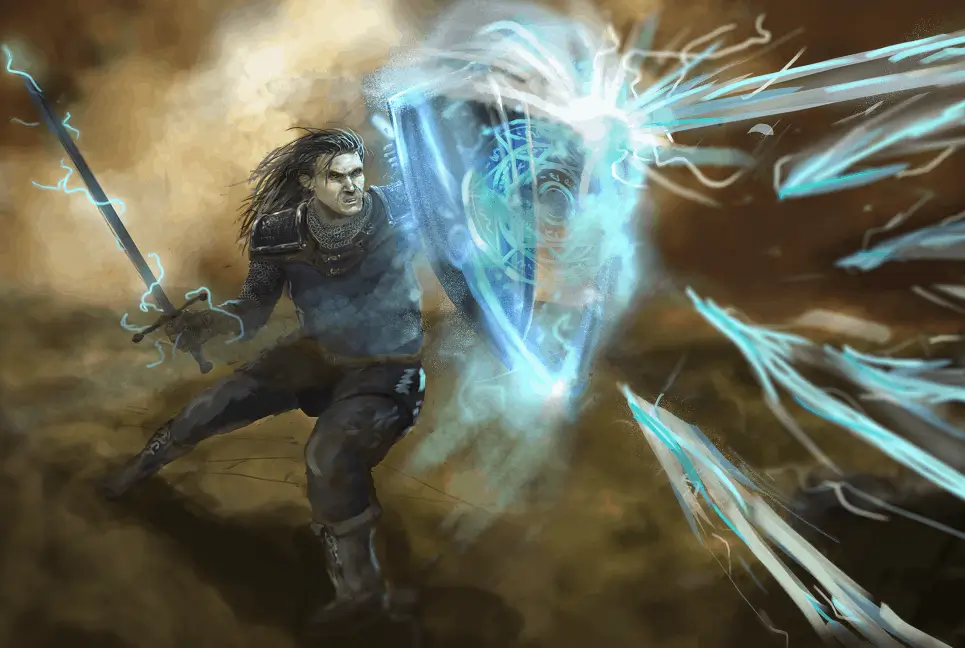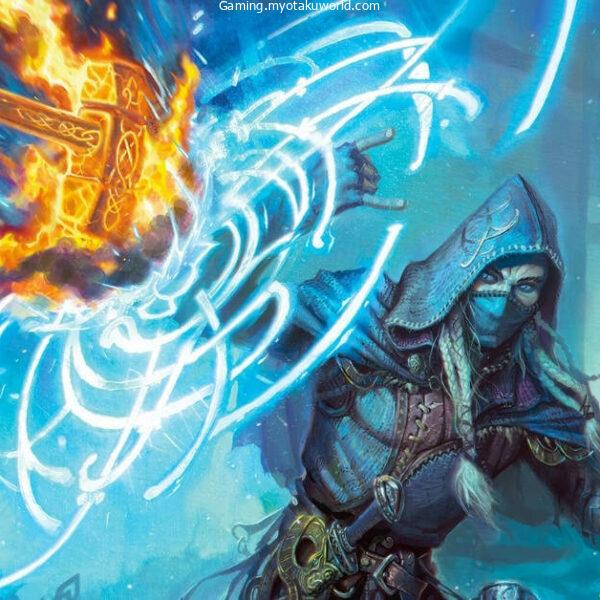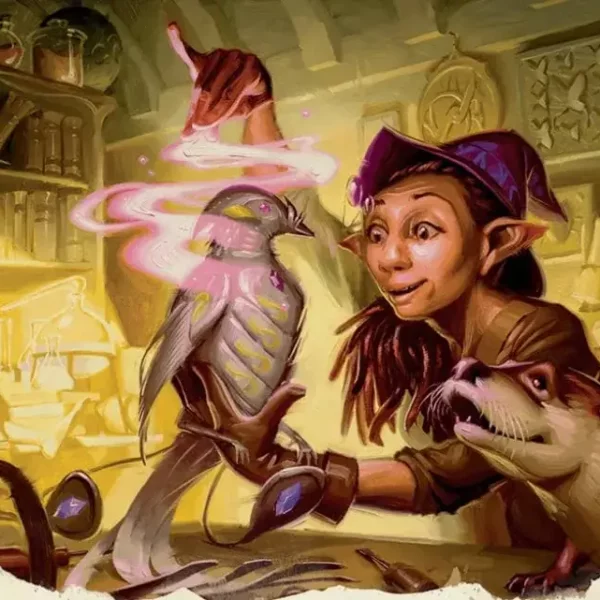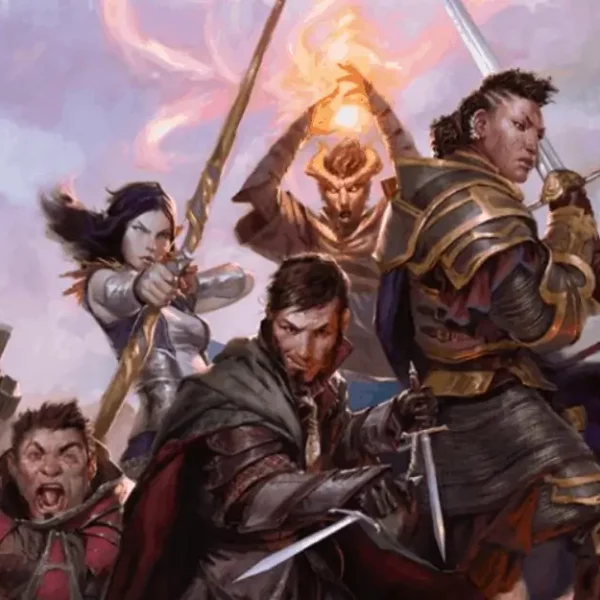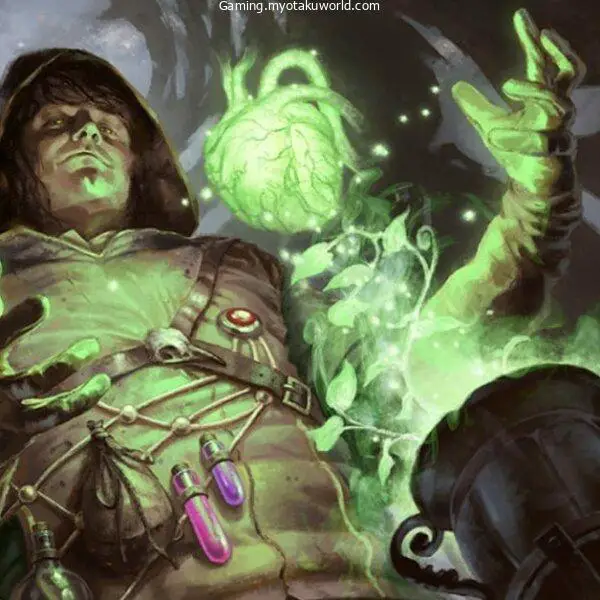This is an in-depth glance at Booming Blade, a damage-increasing melee that can trip. It is a great choice for full-caster and shines when combined with an array of sub-classes.
Booming Blade 5e
The rules of Booming Blade are found in The Sword Coast Adventurers Guide and Tasha’s Cauldron of Everything.
Evocation Cantrip
Casting Time 1 Action
Range Self (5-Foot Radius)
Components Include: V Components: V (A melee weapon with at the very least 1sp.)
Duration 1 Round
You can brandish the weapon you used for casting spells and launch a melee strike using it on a creature that is within 5 feet of the area you.
If you hit the target the target suffers from the normal effects of the weapon and is then covered in energy exploding until the beginning of the next round.
If the target moves five feet or more then, the target suffers 1d8 thunder damage and the spell ceases.
The damage from this spell is increased when you attain certain levels. At 5 levels, or 5 levels the melee attack inflicts additional thunder damage to the target upon hitting and the amount of damage the target is subjected to when moving is increased to 2d8.
The damage rolls are increased by 1d8 when you reach 11 the stage (2d8 as well as 3d8) and then again at 17 levels (3d8) (3d8 as well as 4d8).
Its rules regarding this Booming Blade cantrip show it is somewhat unusual when it is used in conjunction with an attack with a melee weapon using the use of a spell.
One thing to keep in mind is that it is a spell Action but which isn’t it’s an Attack Action, follow the rules for that.
Does Booming Blade Good?
Booming Blade increases the damage output of any weapon with one attack. This can drastically impact the effectiveness of casters, even when casting magic that needs slots.
Since it’s a damage-cantrip that is a leveler, it can be used to increase. Additional damage dealt when an opponent is willing to move is merely a reason to utilize the spell.
Booming Blade is a weapon that deals thunder-related damage although it is not the most common resistance type it’s not as prevalent as lightning or fire.
Furthermore, even creatures that are resistant to thunder can still take usual weapon damages.
This means that classes with only one attack are able to do more damage with each attack, and also bonus damage if the creature is moved greater than 5 feet.
What classes are eligible to receive Booming Blade?
Booming Blade is an evocation cantrip that is a part of the Wizard, Sorcerer, and Warlock spell lists. This makes the spell available to the general players.
It deals bonus damage to every melee strike. The issue is that generally it is not a good idea to casters perform a melee attack the situation could be critical.
A spell called the Eldritch Knight is a good alternative and so is the Hex-based Warlock however, the ultimate master of this ability will be that of the Arcane Trickster Rogue.
Outfitted with a 1d8 damage rapier Arcane Trickster employing Booming Blade does 2d8 damage to one assault at the level of 1.
The benefits of this combo increase as you progress in your character’s level. Damage increases according to the normal cantrip rate, which means additional damage at 5 levels, 11 th, 11 th, and 17 levels.
Additionally, at the level, 5 targets take 2d8 thunder damage when it is willing to move 5 feet. It also can be used in conjunction with a sneak attack.
Bottom Line
Any class capable of casting this spell will gain due to its damage boost as well as its backup plan potential.
The only downside is that you are a caster, and being in melee combat in order to utilize it.
Booming Blade is optimized for combat
As we said that any class can use Booming Blade and see a benefit, however the most beneficial application to make use of The Evocation is that of the Arcane Trickster Rogue.
Although thunder damage isn’t at all stealthy it was created for the Rogue class.
The Rogue class gains the Sneak Attack at 1 1st level and Cunning Actionability at 2 2nd level.
Cunning Action lets them make use of a bonus action to cover, hide, or even disengage. At the 2nd stage, the character dressed above is able to deal 2d8 damage (rapier 1d8 + Booming Blade 1d8) plus sneak attack (if appropriate 1d6) when they employ the spell and add 1d8 to Booming Blade when the target is at least 5 feet.
This lets the rogue compete with any other class for damage, even if they don’t beat their opponents.
At 5 5 grade, Booming Blade adds 2d8 damage when the target is moved more than 5 meters, plus the regular chance trip is increased to 2d8.
An Arcane Trickster Rogue at level 5 is able to fight with that deals damage of 2d8 due to Booming Blade + 1d8 damage from the rapier plus 3d6 damage from sneak attacks (if relevant) plus 2d8 damage from the person who is the target of Booming Blade in motion.
A skilled rogue will get to the melee range with an animal that is in conflict with the rogue’s allies and attack, causing 3d8 + 3d6 damage.
Then, disengage, hoping that it will attract the monster to the rogue, which causes the monster to suffer the additional 2d8 damage.
If you’re a DM and discover that a character of a player is violently assaulting your opponents using the Booming Blade.
You should use an animal that is able to automatically do damage when in melee range, as well as has a close-quarters impact like a salamander or an umber hulk.
Rings of spell-turning and an attack with the sentinel attack to the BBG will force a modification as well.
Booming Blade Sword Coast vs. Tasha’s
- A few changes were added for Booming Blade with the release of Tasha’s Cauldron of Everything. The rules are the most current ones that were available in TCE. Some of the most significant changes included:
- The range was changed between 5 and “self (5-foot circle).”
- The spell can’t be twin-spelled by meta magic because of the new self-spelling range.
- The spell is cast with an instrument called the Caster Feat.
- The spell has stopped working when combined with Spell Sniper Featas. Spell Sniper Feat as the spell is limited to self-responsibility, and is not able to be doubled.
- Pact Weapon Pact Weapon can be utilized with the spell as the weapon conjured simulates the real weapon.
The Spell Sniper feature grants you a trip that requires you to roll an attack. Booming Blade meets these criteria.
This means that the spell is able to be used in any other class which fulfills the requirements of Spell Sniper feat.
At Higher Level
At level 5, the melee attack does 1d8 more thunder damage to the target, and the target takes 2d8 more damage from moving. At 11th level and 17th level, both damage rolls go up by 1d8.”
Sword Coast Adventure’s Guide, page 143
Final Words
Cantrips are as simple to obtain as hit points to wizards so picking them up isn’t easy.
Booming Blade is about as excellent as you can get for damage and damage close distance.
It’s a must when you are a caster who feels too close to adversaries frequently.
FAQs
Should I Choose Booming Blade?
Yes, especially if your character is still in the lower levels and hasn’t gotten very far yet. But even though you can cast more powerful spells as you level up, Booming Blade gets stronger as you do. Even if you can cast powerful spells, you should definitely think about it.
Is Booming Blade a Good Spell?
The problem with Booming Blade seems to be that the target only gets the full amount of damage if they move out of combat after the cantrip is cast.
It will never be easy to make an opponent move against their will, especially when they are in melee range and going about their business. After all, as was already said, if the opponent can hit their target, why would they move?
There are different ways to use the Booming Blade cantrip, and how players choose to use it will depend on a number of things, like the class and fighting style of their character. Keeping an enemy where you want them is helpful. If they have a Blooming Blade cast, a wizard or other creature with low hit points will think twice before getting in the fight.
Who Can Use Booming Blade?
The Booming Blade cantrip is on many spell lists and can be used by many classes. To figure out how useful it will be for you, you should think about how it fits in with your other traits and how your character class works.
The Rogue subclass of the Arcane Trickster can use this cantrip with their Dash ability to attack and then run away from the fight. Their opponent can’t follow them right away because they’d take thunderous damage if they did. In the same way, swashbucklers can use it to pin their opponent in one place and then use their fancy footwork to dance away from a fight.
This is a good way for Bladesinger Wizards to do more damage, especially when they are weaker or lower-level adventurers. Eldritch Knights are no slouches when it comes to going into melee, and they can use this to force their opponent to make hard decisions.
